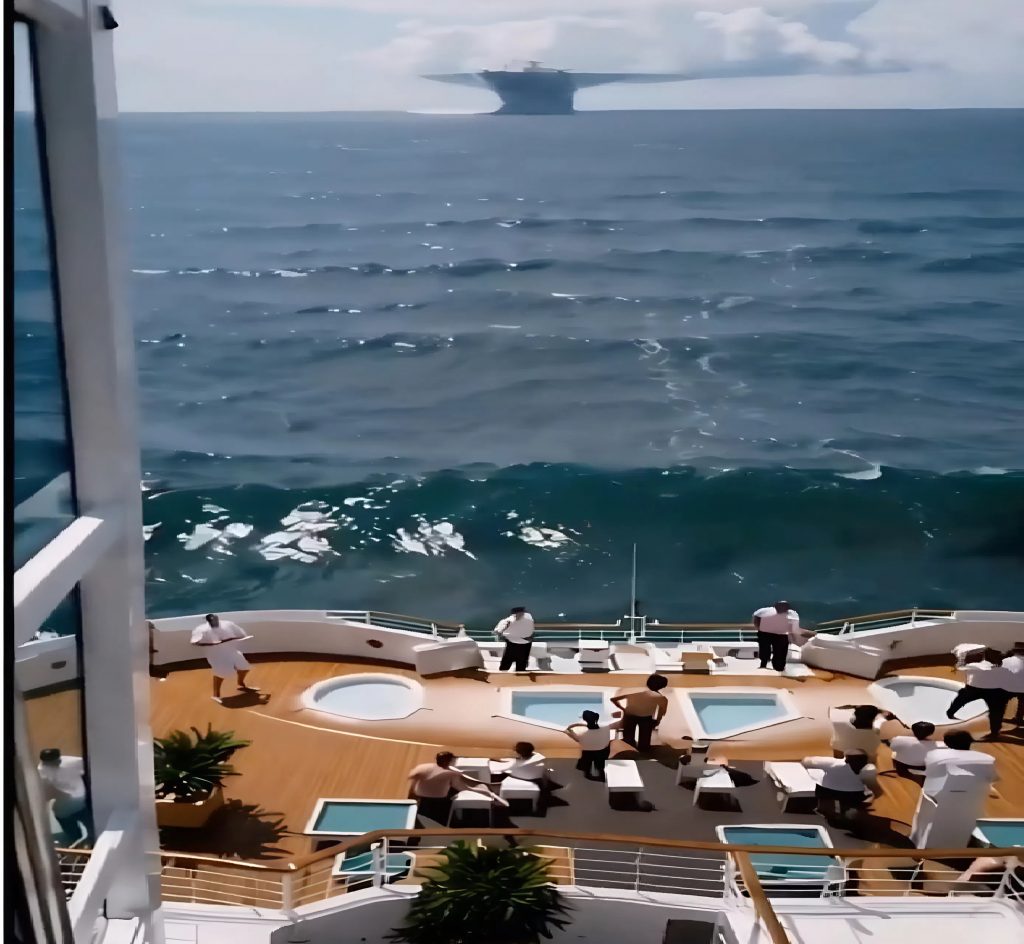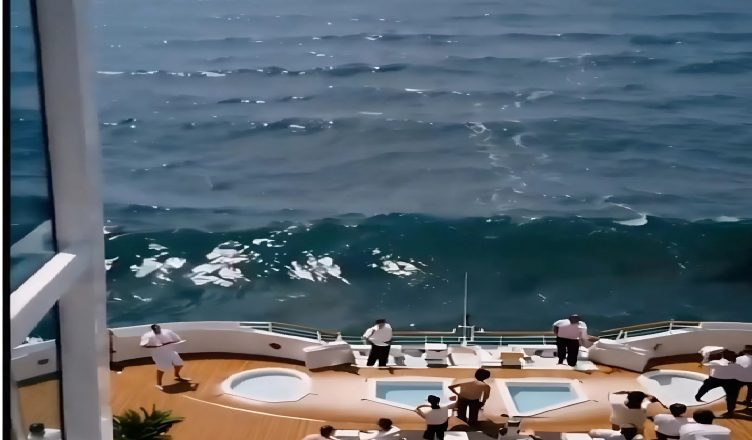When the Orpheus set sail on its 17-day voyage from Cape Town to Buenos Aires, everything appeared perfect. Onboard were 328 passengers—families, retirees, entrepreneurs—ready to indulge in luxury, warm waters, and endless skies. The ship gleamed under the sun, cocktails were poured, and jazz drifted softly across the decks. No one suspected that the ocean had other plans.
It began with silence. The wrong kind of silence.
At approximately 3:12 AM on the fourth night, passengers started waking up to an odd vibration running through the vessel. No storm. No wind. Yet the ship shuddered—slowly but insistently—as if something massive was breathing beneath the hull. Lights flickered once, then steadied. No screams. Just confusion. Most chalked it up to late-night maintenance or engine testing.
But the captain knew better. There were no tests scheduled. He summoned the engineering crew. Diagnostics came back unclear—readings on the lower deck were unstable. More alarmingly, the sonar returned a blank. Not empty—blank. As if the ocean floor had simply… disappeared.
By dawn, the sea was unrecognizable.
The sun rose on a mirror. The waves were gone. Not calm—absent. The water reflected the sky so perfectly that the horizon became impossible to define. And not a single seabird in sight. Even the ever-present gulls had vanished.
Then a crewman, Sergio Alvarez, reported a distortion on the horizon. He couldn’t describe what he saw—only that “the sky and sea no longer lined up.” Officers observed the same through binoculars and thermal sensors. All devices returned zero data. Whatever they saw… wasn’t technically there.
But it was moving.
At 10:24 AM, navigation systems failed.
Not just failed—they glitched. GPS began reporting an impossible set of coordinates: 66.66° S, 66.66° W. No such place exists. Not on any maritime chart. The location was fixed, frozen on every instrument. Reboots didn’t help. Satellite communication dropped. Radar systems pulsed with a low-frequency hum—less like interference, more like whispering.
Passengers began reporting identical dreams. In the dream, they stood on the deck, staring into the sea as a dark, towering silhouette approached—larger than the ship itself. No sound. Only a sense of being called. Some even remembered a sentence spoken directly into their minds:

“The ocean calls its own back.”
Panic didn’t come from screams—it came from stillness.
The ship stopped moving. The engines ran. Systems were green. But the vessel was… anchored. As if something held it in place beneath the water. Then the sea around the ship turned darker. Not oil-slick dark—thick. The air remained warm, but metal fixtures on the lower deck developed frost. One passenger claimed to see his own reflection move before he did.
Someone launched a lifeboat. Seven minutes later, contact was lost. CCTV captured it gliding across the water, then—nothing. It didn’t sink. It didn’t float. It simply vanished, as though it passed through an invisible wall.
Return seemed impossible. And yet, it happened.
After 36 hours of isolation, Orpheus was suddenly spotted 200 kilometers off the Argentine coast. No storm damage. Systems operational. Communications restored.
But the people had changed.
Within days of docking, their stories diverged wildly. Some claimed they heard voices under the hull. Others believed they had seen their own bodies glowing in the dark. One cook wrote cryptically in a notebook: “We were between layers. Where time doesn’t walk—it spirals.” Three days later, he jumped from a hospital window. No body was recovered.
So what did happen?
The official statement blamed stress, sensory deprivation, and a temporary navigation blackout. But independent investigators found a disturbing anomaly: exactly 12 hours of data missing from the ship’s logs. Not corrupted—deleted. Yet all onboard clocks had kept time correctly throughout.
No survivor has spoken publicly since. Many changed their names. Some moved to other continents. Captain Marcus Larsen resigned. His final message on social media read:
“When the water gets too quiet… don’t trust it. That’s not peace—it’s bait.”
